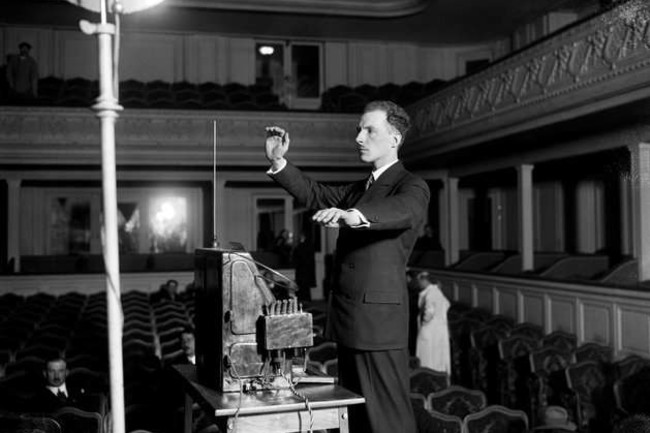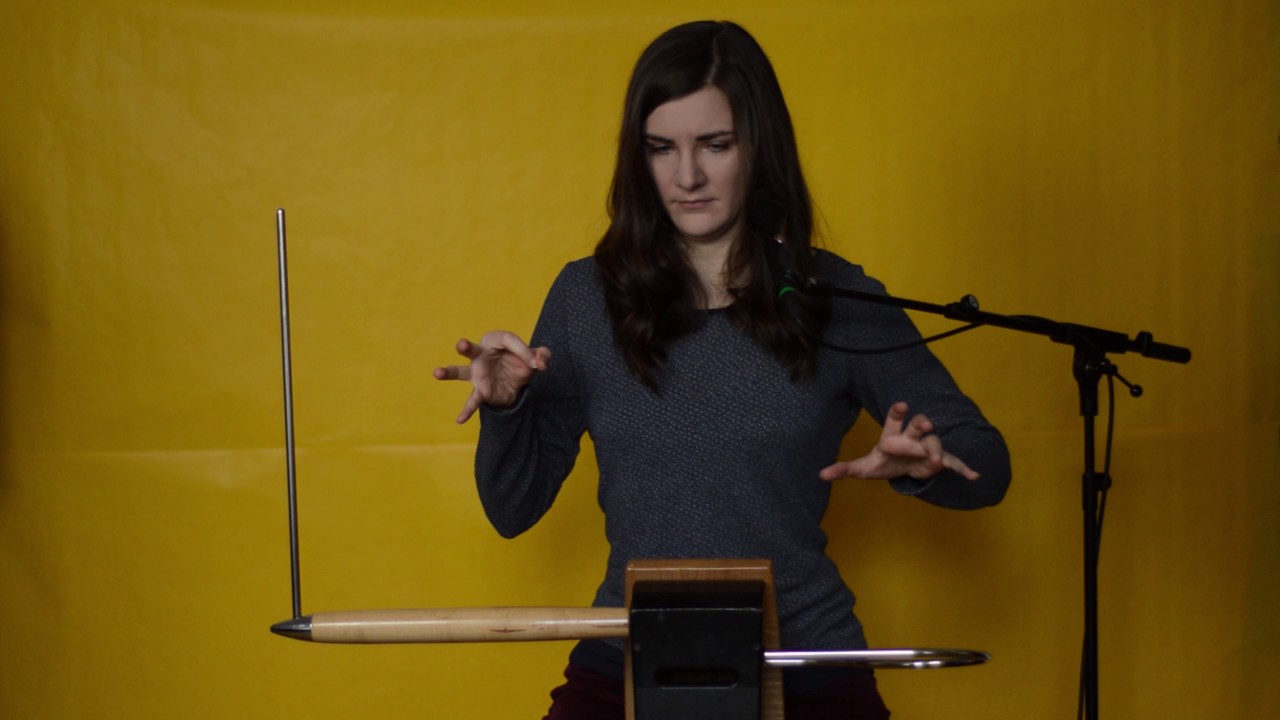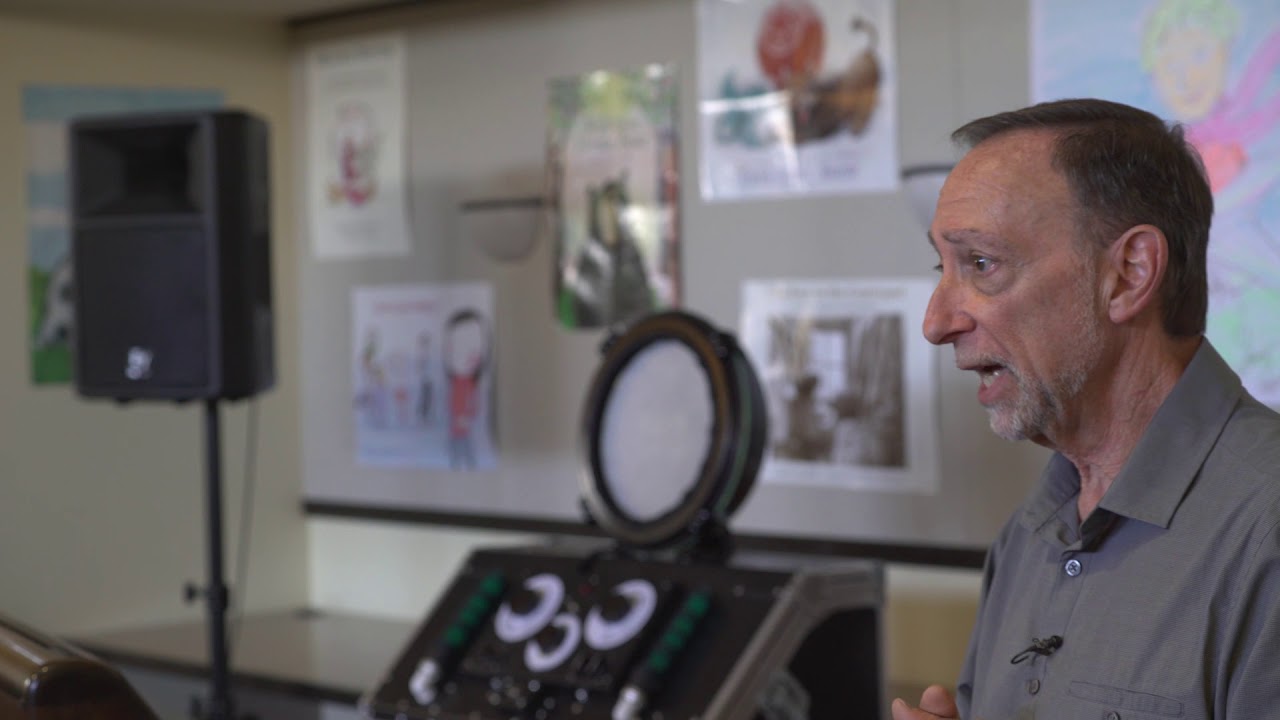List members , back in Lenin's era , there was a Russian scientist by the name of Leon Theremin , who invented an incredible musical device , named after him . It looks magical , because this musical instrument is played WITHOUT TOUCHING it !! Yes , it's based on the concept of ether and as can be expected this idea was used for spying activities too .
Unfortunately for Theremin , for some reason , the Russian authorities had banished him to a Gulag where he had to spend several years in rigorous imprisonment . The later years of his long life passed in relative comfort :-
Creepy Music and Soviet Spycraft: The Amazing Life of Leon Theremin
The godfather of electronic music was also a darling of the New York social scene, a gulag prisoner and the man behind one of the most ingenious spy devices ever created.
By Nathaniel ScharpingNovember 1, 2019 3:30 AM

Leon Theremin, also known as Lev Termen, demonstrates his musical instrument. (Credit: Wikimedia Commons)
Newsletter
Sign up for our email newsletter for the latest science news
Sign up for the Newsletter
Imagine a UFO descending from the heavens, its round disk pale against the night sky. What sound does it make? You’re likely imagining a keening whine in your head, like the howling of a haunted wind or the moans of a high-pitched ghost.
That’s the sound of the theremin, a musical instrument invented nearly a century ago. It was one of the first electronic musical instruments, and the first to be mass-produced. The theremin’s ethereal tones made it ubiquitous in science fiction film scores during the middle of the 20th century.
But the curious instrument was actually invented decades earlier, in 1920, by a Russian scientist named Lev Sergeyevich Termen. As a young man working at the Physical Technical Institute in Petrograd, he noticed that something odd happened when he hooked up audio circuits to an electrical device called an oscillator in a certain configuration . The oscillator produced an audible tone when he held his hands near it, and he could shift the tone just by waving his hands back and forth.
A classically trained cellist, Termen was immediately intrigued. Where other engineers may have seen a quirk of capacitators and circuits, he saw the opportunity to summon symphonies from the invisible.
Termen showed the device to his superiors and delivered the first concert with his device soon after. He followed with a private demonstration for Lenin in 1922, who was apparently intrigued by the strange device. The theremin — or etherphone, as it was originally called — had already become Termen’s calling card.
Musician Alexandra Stepanoff plays the theremin on NBC radio in 1930. (Credit: Wikimedia Commons)
The instrument became the forerunner of modern synthesizers, and had an indelible influence on the soundscapes of classic science fiction. Echoes of the theremin’s futuristic sounds appear everywhere, from the classic synth tones of ’90s-era G-funk to U.K. house music.
But all that came later. At the time of its creation, nearly 100 years ago, the theremin marked a seminal moment in the life of its young inventor. It was the beginning of a transcontinental voyage for Lev Termen, one that would make him a millionaire and a prisoner, a celebrated musician and a Soviet spy.
Cello in a Dense Fog
Termen, known also as Leon Theremin, was born in 1896 in St. Petersburg, Russia. A bright child, he took an interest in physics and astronomy from a young age — reportedly discovering a new star at the age of 15.
Termen enrolled in university classes at St. Petersburg University, as Albert Glinsky writes in his biography of Termen, Theremin: Ether Music and Espionage . But his studies were disrupted by World War I, for which he was conscripted as a radio technician. After the war ended, he began work in earnest in the promising new world of electrical devices, leading quickly to the invention of the theremin.
The instrument’s genesis was the product of a lingering dissatisfaction with the musical instruments of the time, Termen said. The bows, reeds and keys of the instruments of the day could only produce so many sounds — he wanted more.
“I realized there was a gap between music itself and its mechanical production, and I wanted to unite both of them,” Termen said of his invention in a 1989 interview. “I became interested in bringing about progress in music, so that there would be more musical resources. I was not satisfied with the mechanical instruments in existence.”
The theremin doesn’t look like an instrument. It’s nothing more than a box with two wires sticking out of it. But to people at the time, the sounds it made, summoned by the simple act of waving two hands near its antennae, were marvelous.
Descriptions of the theremin’s curious timbre are varied and expressive, though Harold C. Schonberg, then chief music critic for The New York Times , may have put it best in a 1967 profile. The device sounds something like “a cello lost in a dense fog and crying because it does not know how to get home,” he wrote, “not unlike an eerie, throbbing voice.”
In the years after the theremin’s invention in the early 1920s, at a time when electricity and devices that harnessed it were a source of constant fascination, Termen’s instrument must have seemed plucked from the future. The young scientist toured Russia, and eventually Europe, with his new device, giving concerts and demonstrations. His travels culminated with a move to New York City in 1927, where Termen and his instrument quickly became celebrities among the city’s artistic elite.
‘Ether Music’ Device
Soon after moving to the U.S. Termen was ensconced in a large house on 54th Street in New York, where he had a studio, entertaining musicians, scientists and more. Einstein was a guest, and, in Termen’s telling, maintained a studio there to work on concepts pairing geometry with music theory.
Just a year later, the electronics company RCA acquired the patent for the theremin, with the plan of mass-producing it for audiences worldwide. Because it required no actual contact, they assumed the device would be easy to learn to play — though later evidence would suggest otherwise.
“Anyone who is able to hum a tune, sing or whistle is likely to play the RCA theremin as well as a trained musician,” an RCA executive, quoted in The New York Times , said of the item, which cost $175. They called it an “ether music” device.
In fact, if you were a fan of the orchestra in New York City at the time, you were probably fairly familiar with the theremin. Thereminists were popping up in orchestras around the city, and well-known conductor Leopold Stokowski planned to write them into popular pieces of music. In 1929, Termen and three other thereminists played at Carnegie Hall, performing works by Chopin, Tchaikovsky and Bach, among others.
He also sought news ways of pushing the boundaries of musical instrumentation. Termen introduced a rudimentary drum machine, the rhythmicon, in 1931. He also created a kind of full-body theremin, called the terpsitone. Where a theremin responded to hand movements, his new creation would create music in response to a musician moving their entire body in and around the device. Termen foresaw an innovative pairing of dance and music, allowing a performer’s expressive movements to be translated into a song of their own.
Though he built a prototype, Termen never found much of an audience for the instrument. What he did find, however, was romance. A dancer named Lavinia Williams, from the American Negro Ballet, had been working with him in his studio, and Termen was smitten. They were eventually married — something that may have turned away potential business partners, the BBC reports, due to the fact that Williams was African-American.
Along with a new wife and an expanding social circle, Termen continued inventing. He created an electronic crib alarm in the wake of the Charles Lindbergh baby scandal, and won a contract to produce a metal detector for Alcatraz (though it never panned out). He was at times a reported millionaire, though debts hounded him constantly — Termen’s capacious intellect did not seem to encompass the world of business.
But his happiness in America was to be short-lived. In 1938, under mysterious circumstances, Termen returned abruptly to Russia, smuggled aboard a Soviet ship using an assumed identity. To his friends and colleagues in New York, he seemingly vanished for almost three decades. Williams, his wife, never saw him again.
The reasons for his departure remain murky and varied. Initial speculation held that he had been kidnapped by the Soviets and violently repatriated in the midst of Russia’s burgeoning involvement in World War II. Later reports suggested that he may simply have been fleeing his creditors in the U.S. Decades later, Termen insisted that his departure was motivated solely by patriotism. As Russia inched closer to war, he wanted to be there to help.
Whatever the reasons, Termen would soon find himself implicated as a traitor in Russia, perhaps because of his time in America. The one-time socialite was sentenced to hard labor in the country’s gulag system, which was often a death sentence. His time in the Soviet prisons would stretch for decades, stranding him oceans away from the life he had once lived in New York. But it would also be a kind of rebirth for the brilliant inventor — one that would tip his legacy into infamy.
Spycraft, and a Forerunner to RFID
Life in the Soviet gulags was relentlessly brutal. Prisoners did hard labor, often until their bodies wore down and they died. Though estimates vary, some put mortality rates as high as 20 percent during the system’s harshest years. It was hardly a place for a scientist, to say nothing of a man accustomed to the luxuries of the upper crust.
But Termen appears to have made the best of it. Originally assigned to a labor crew, he was soon made supervisor of the workers. And less than a year into his stay, he was brought back to Moscow to join a system of secret laboratories called sharashka, along with other top scientists. There, he began inventing again.
His creations included a system code-named BURAN, which used an infrared beam to pick up the vibrations that sound waves create on a pane of glass. It could be used to listen covertly to conversations inside buildings without risk of being detected. The device was put to use against the U.S., France and Britain during the Cold War, and even used to spy on Stalin himself.

A replica of the Great Seal with the listening device hidden inside. (Credit: Austin MIlls/Wikimedia Commons)
Termen’s most well-known invention during his time in the sharashka, however, was a device known simply as “The Thing.” It was a listening device of such simplicity and ingenuity that it would go undetected for seven years in the office of the U.S. ambassador to Russia, transmitting sensitive diplomatic information to the Russians and greatly embarrassing the U.S. upon its discovery.
The spy device was hidden inside a carved wooden Great Seal of the United States, given to the U.S. ambassador by a group of schoolchildren in 1945. It hung proudly in the ambassador’s office until 1952, when a British radio operator intercepted its transmissions and “The Thing” was uncovered.
The bug was a simple cavity resonator and circuit attached to an antenna that would only pick up signals when an electromagnetic signal of the correct frequency was aimed at it. Soviet agents outside the embassy only had to aim a radio beam through the windows, and the device would transmit back the voices inside.
It took the CIA years to successfully replicate the spying device, today heralded as a forerunner to modern radio frequency identification — or RFID — technology. The passive transmitters in our keycards, credit cards and more rely on the same principal as Termen’s Cold War-era listening bug.
Electricity is Not for Music
Termen was released from the sharashka laboratory in 1947, though he seems, if anything, to have missed it.
“It turned out that when I was free it was much more difficult to work in the lab,” he said years later.
Perhaps longing for a return to a life unburdened by anything but science, he asked the KGB to hire him after his release. Termen went on to work in secretive government labs, and for years likely dedicated himself purely to research, though little is known about his activities during this time.
In the early 1960s, Termen was officially cleared of the charges that had put him in the sharashka and allowed to return to a more public life. He took a position at the Moscow State Tchaikovsky Conservatory, where he returned to the experiments with electronic musical instruments that had captivated him as a young man.
His appointment there was to be short-lived, unfortunately. The New York Times published a short profile of him and his experiments in 1967 (the one calling the theremin a “cello lost in a dense fog”). It was the first time many acquaintances in New York had heard from him since he had left. But in Moscow the piece didn’t go over well: The conservatory decided his work didn’t fit with their mission and closed his lab down.
“Electricity is not good for music; electricity is to be used for electrocution,” Termen remembers being told.
Though he spent much of his later life in relative obscurity, a more hopeful coda to his long, tangled life did emerge. A trip to a European music festival in 1989, and a long-overdue return to America in 1991, reintroduced Termen and his inventions to the world. In 1990, well into his ninth decade, Termen performed at the Electronic Music Festival in Stockholm. A documentary on his life followed in 1993, airing two days before his death at 97.
The Theremin’s Legacy
Today, Termen remains best known for the instrument that bears his name. Theremins have left an indelible sonic fingerprint on popular culture, though their use has faded today. The most well-known touchstone for the instrument likely remains the Beach Boys’ 1966 hit “Good Vibrations.” (Though that instrument is not technically a theremin, but a variation known as an electro-theremin.) Five decades later, modern synthesizers can produce a far greater range of sounds and are far more easily controlled.
But the theremin remains just one facet of Lev Termen’s prodigious output. Throughout the course of his long life, as he moved between countries and political regimes, freedom and imprisonment, there was one constant: He never stopped inventing. His experiments and irrepressible curiosity led him to multiple technical breakthroughs, any of which would be impressive in its own right. It simply came as a byproduct that they also made him both a pioneering musician and an antagonist to the U.S. government.
Regards




